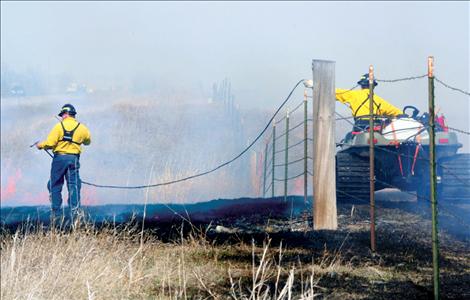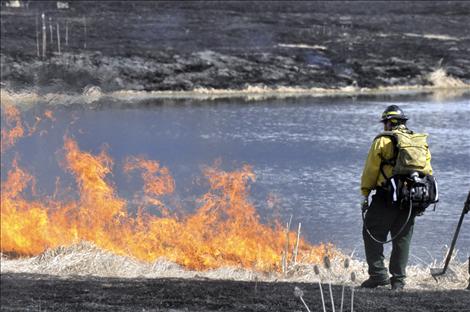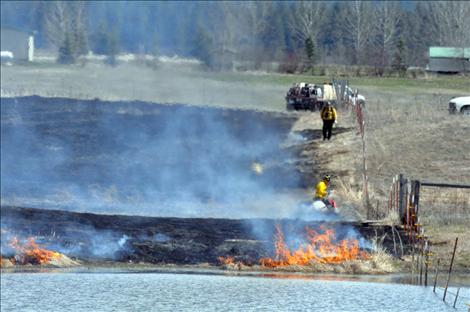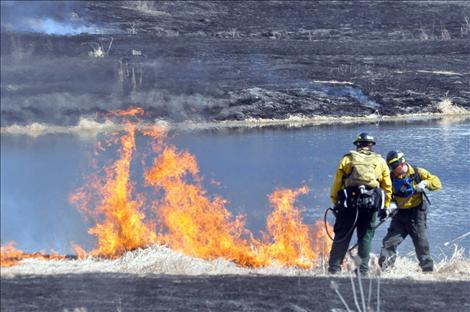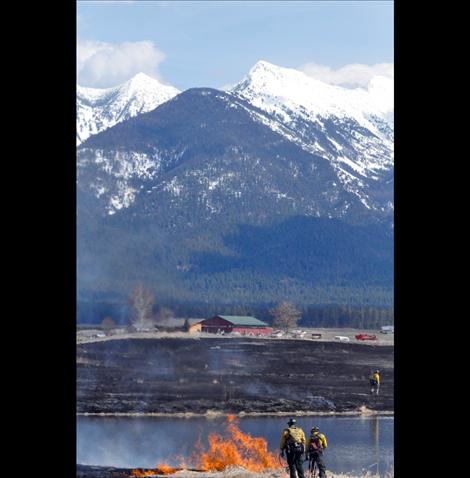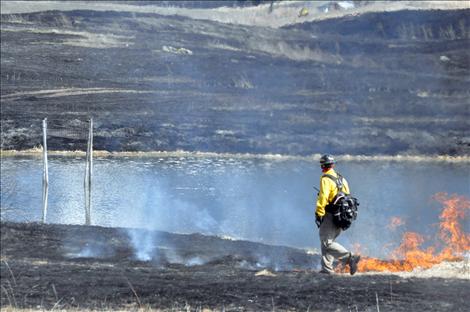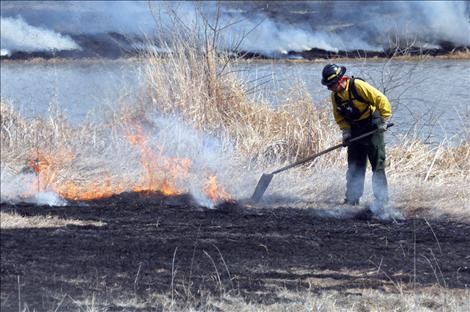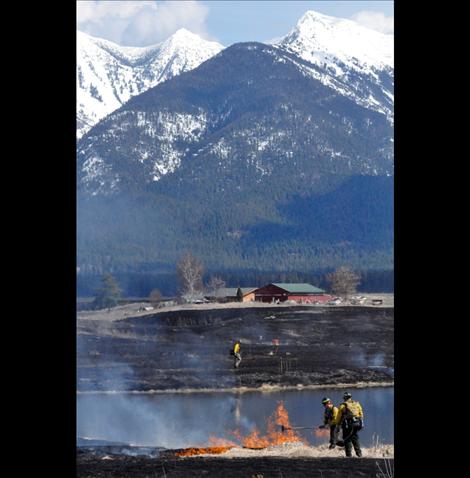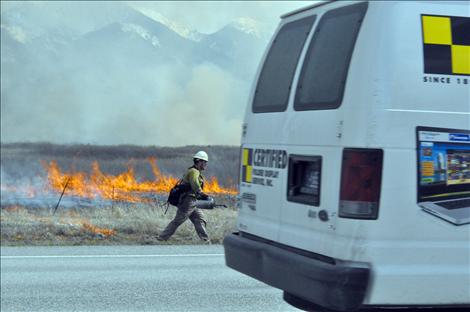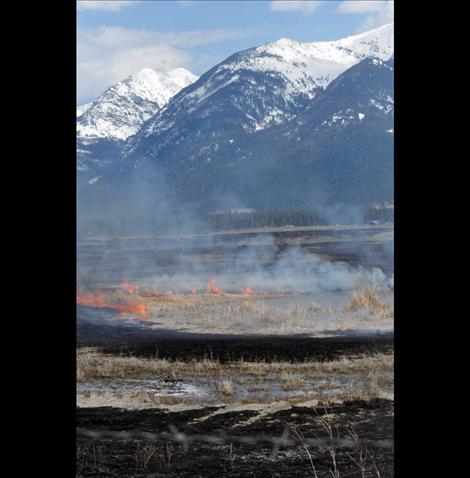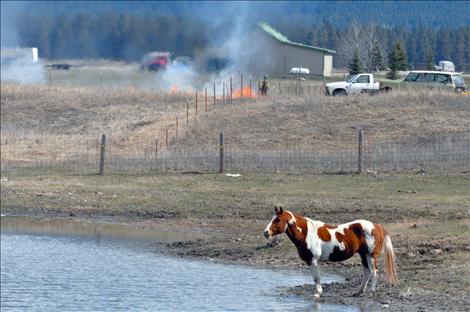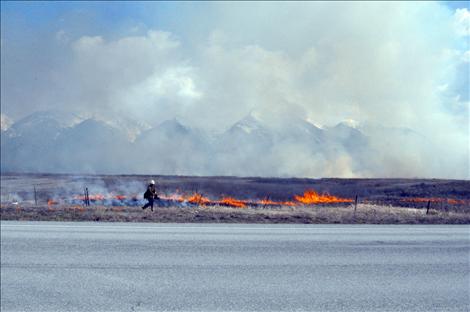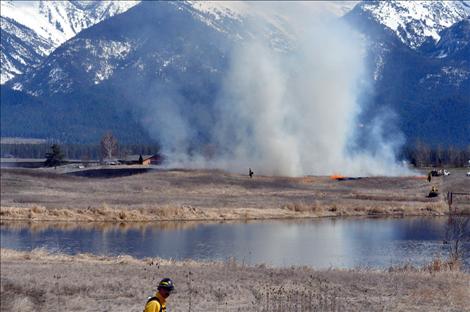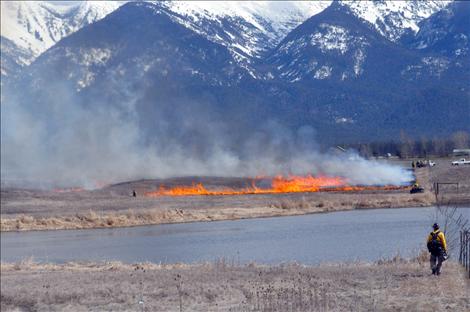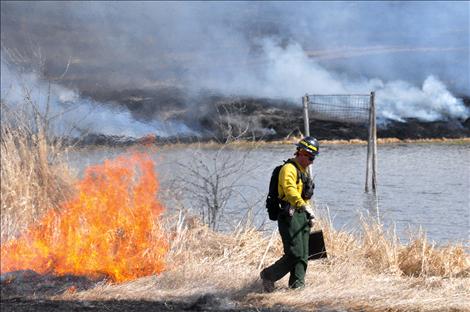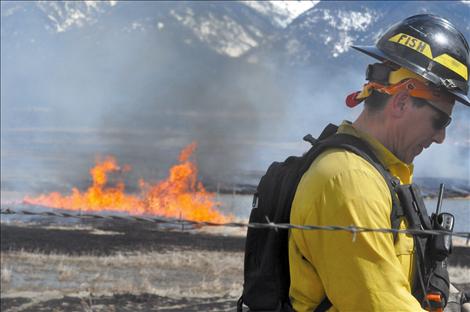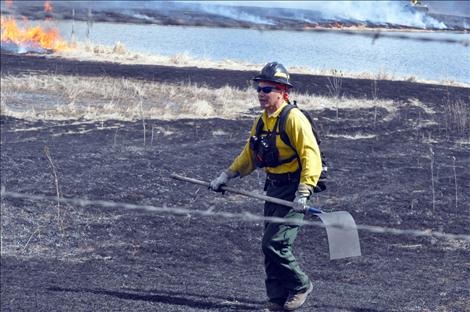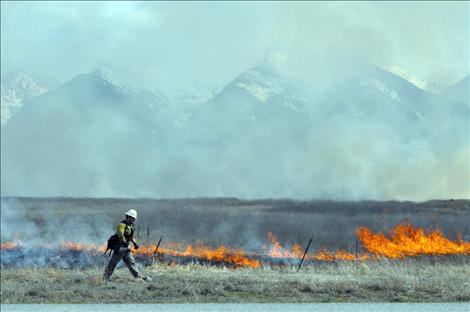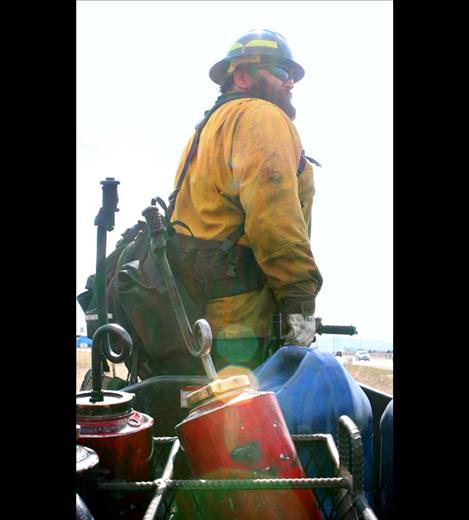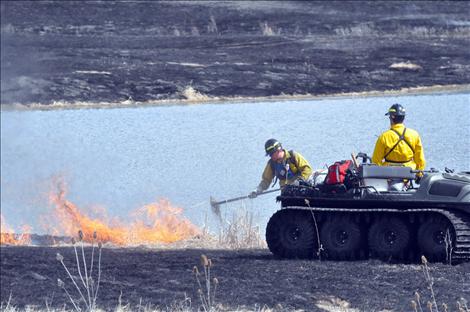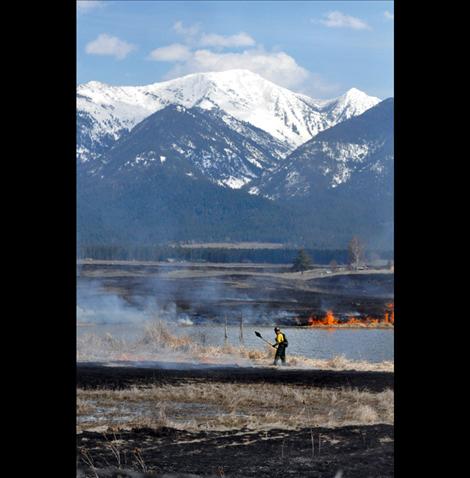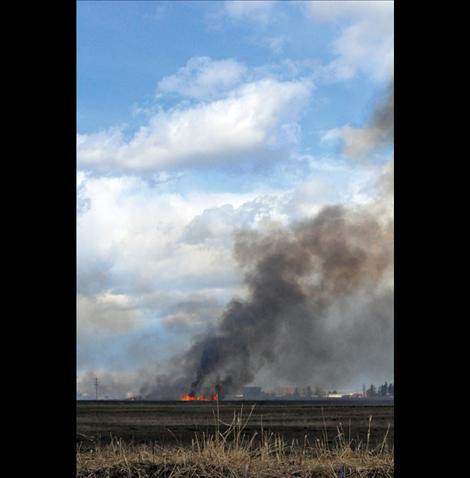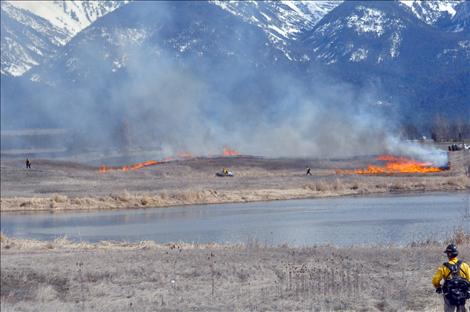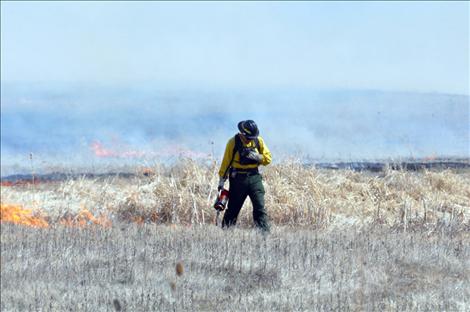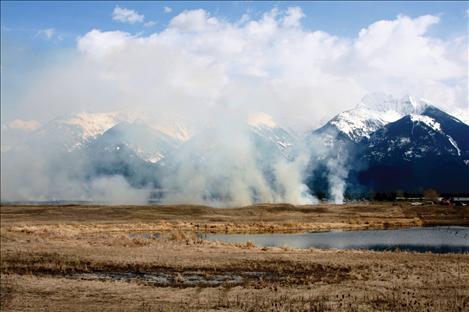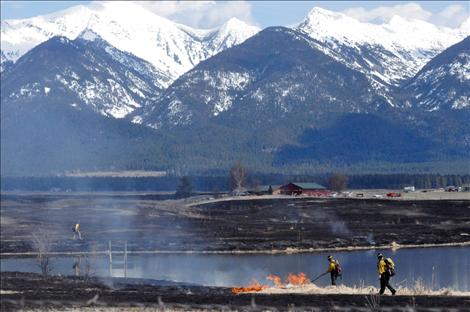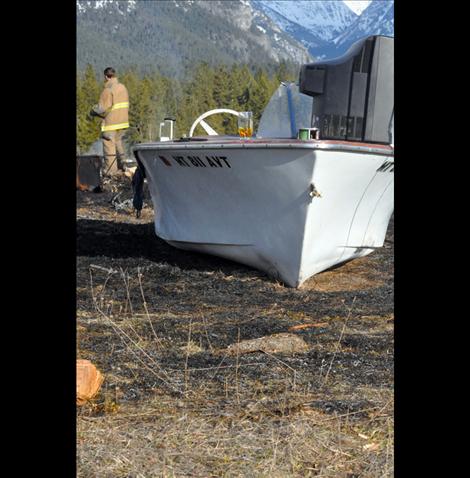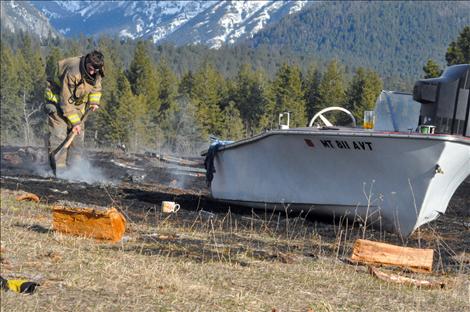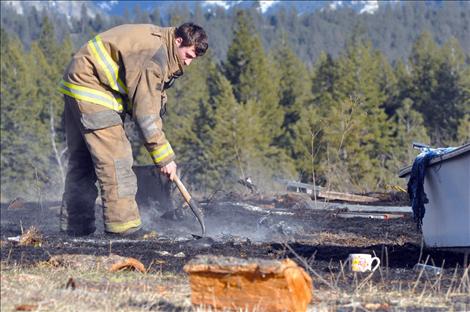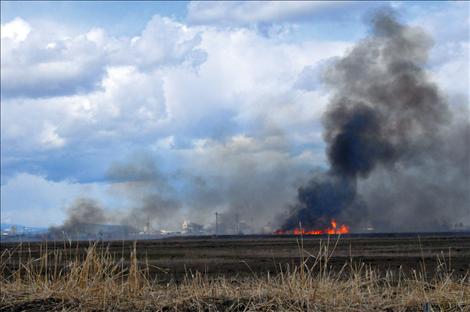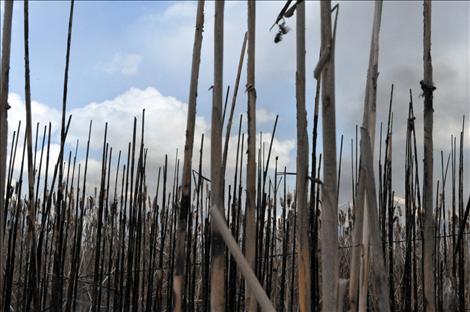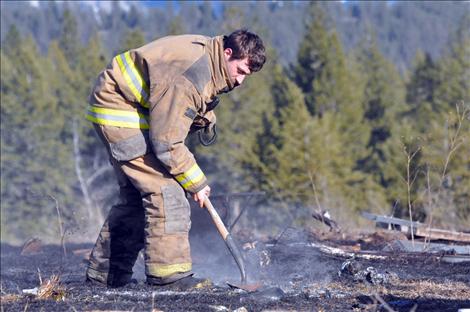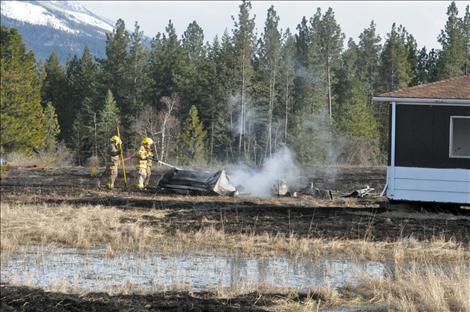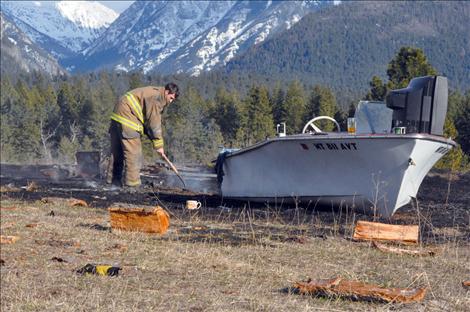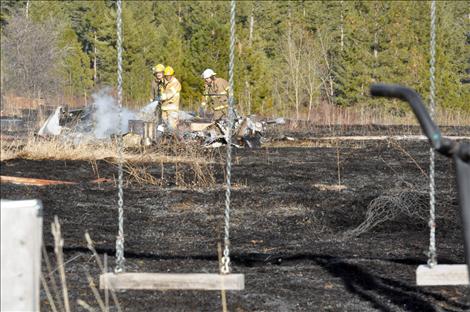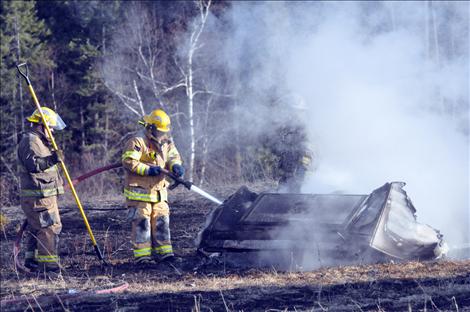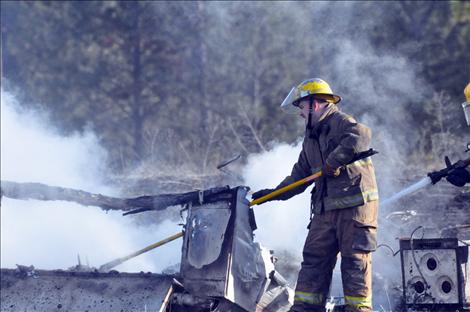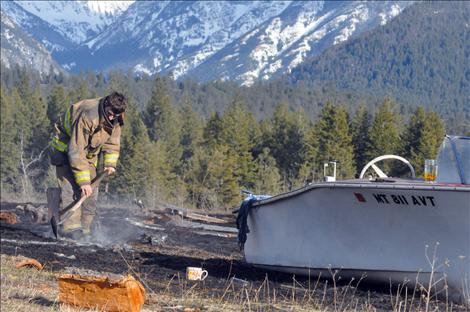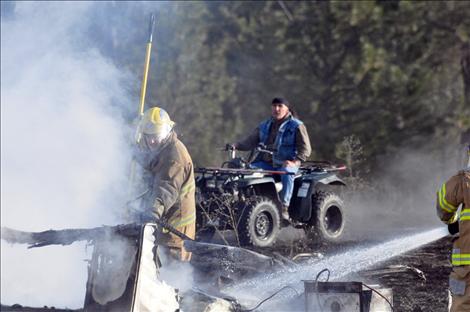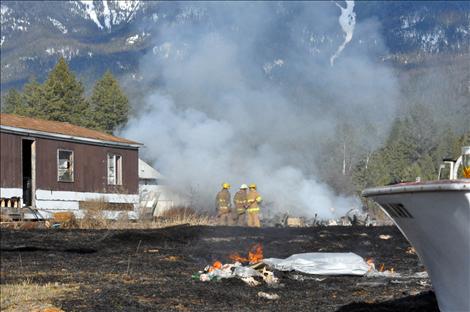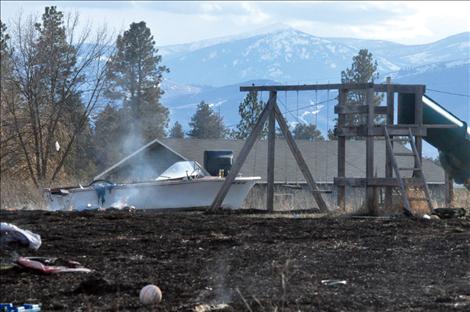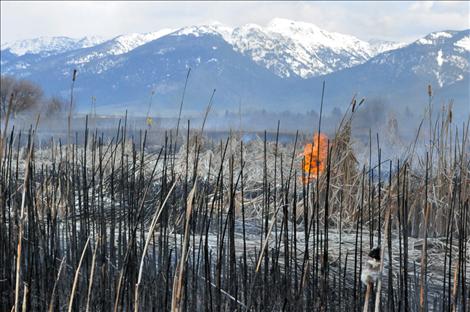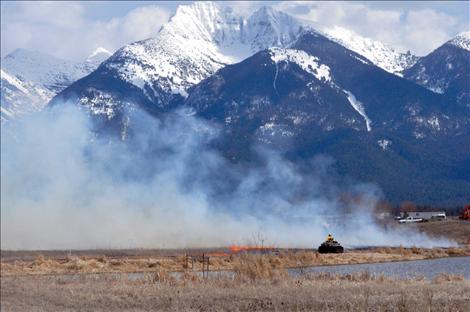Open burning season underway, residents urged to use caution
Hey savvy news reader! Thanks for choosing local.
You are now reading
2 of 3 free articles.
The sun finally peeked through the blanket of dissipating winter clouds last week, only for another manmade brown haze to block it out again in some parts of the Mission Valley.
Property owners and government agencies were out making the most of what’s left of open burning season.
Yellow shirts worn by fire crews from both the Confederated Salish and Kootenai Tribes and the National Bison Range could be seen moving through the haze from Highway 93 south of Ronan Thursday as crews ignited grasses in the wildlife refuge near Kicking Horse Job Corps.
“It’s a controlled burn,” said Devlin LaFrombois, fire information specialist for the Tribe. “The Tribe and the Bison Range are working together to burn out the noxious weeds on the Bison Range’s water fowl production area. We are cleaning it up for the water fowl.”
Controlled burns help keep invasive species from spreading through native grasses and destroying the natural habitat, he explained. The proximity to the highway added to the precautions the crew needed to take during this burn.
“We wouldn’t want to risk the fire getting away and covering the highway with smoke and causing an accident, so everything must be perfect,” LaFrombois said.
A warm sunny day — minus the rain that fell the day before — with winds blowing away from the highway created the perfect burning conditions for the area. Water trucks were moved in, signs were set up on the highway and homeowners were informed before 30 crewmembers spread out across about 900 acres of the refuge.
“This area has a lot of thistle and knapweed. We want to bring it back to all native grasses,” Laframbois said.
Several crewmembers walked the perimeter of the refuge with torches dripping a diesel and unleaded fuel mixture to create the outside fire line. They walked quickly with fire lighting up behind their boots.
“There is a science behind directing fire. We want it to move inward with the two points we started coming together. It’s about keeping it controlled. The idea is to corral the fire,” LaFrombois said.
Within an hour the refuge was completely black minus the ponds where two ducks swam seemingly oblivious to what was going on around them.
“In about two weeks from now this will all be nice and green,” he said.
Officials reminded the community that flames can help usher in new life for grasslands and other habitat, but can also prove destructive and deadly if they are handled improperly.
Personal burning projects also kept fire crews on their toes last week. Ronan Volunteer Fire Department was able to save three occupied structures from a March 31 afternoon fire at the home of Mary Anne Bird, south of town.
“I got home and everything was on fire,” Bird said of the grassfire, that covered approximately an acre and burned up to the doorway and skirting of an old abandoned mobile home. It also burned underneath, but didn’t destroy, a small play set and beached boat.
Bird used an old broken shovel to beat back the flames until fire trucks could arrive. She then learned that an elderly, disabled neighbor decided to burn, but winds spread the fire too quickly. The man couldn’t keep up.
Not being able to contain a burn with a single person is a common problem when burning, according to Polson Fire Department’s Public Information Officer Karen Sargeant.
“I’ve done many, many burns, and even I don’t burn alone,” Sergeant said.
To reduce the risks, Sargeant said people should clear an area above and around where burning is going to be conducted. Clearing the area includes trimming any grass beneath and around the burn site so it’s very short. Drenching the perimeter of the burn site with water before the burn can also contain the fire.
A water hose or another method of dousing the flames multiple times should be readily available.
“Have your hose hooked up and ready to go in case you need it,” Sargeant said.
If burning grasslands, Sargeant said people should be vigilant of roots that burn invisibly beneath the surface, travel several feet away, and then pop up above ground. Stray embers that fly several feet away can also light in high grasses and spread quickly.
Wind is a major factor in burns that get out of control. In Mission Valley, relative humidity is usually high in the mornings, which makes burning at the crack of dawn unfavorable. As the day goes on, it becomes drier, but winds also tend to pick up in the afternoon.
To find out if conditions are ideal for burning, people can call Lake County Dispatch at (406) 883-7301. Sargeant asked that anyone conducting a burn let dispatch know beforehand. The dispatcher can then log the burn, in case anyone sees smoke and inadvertently calls in a house fire. Many times firefighters cut out of the engine house at breakneck pace only to find out it is a controlled burn, Sargeant said.
This happened April 2 in Ronan, when a man reported a fire west of town. The smoke reported was a controlled burn at the Ronan Wastewater Treatment Facility on Mink Road.
Although firefighters stand at the ready should something go awry, both Sargeant and Ronan Volunteer Fire Department Chief Mark Clary reminded people that any damage caused by a fire is legally the financial responsibility of the igniter. This can include fence posts, livestock, crops, and farm equipment.
“It’s a huge risk,” Sargeant said.
In the event a fire does get out of hand, people can always run to an already burned area to get away from the flames, according to Clary. People should always have an escape route planned and never get in front of a fire, he said.
Open burning season lasts until April 30. Burning on the Flathead Reservation after that date requires a permit from the Confederated Salish and Kootenai Tribes. For more information about obtaining a permit, call 406-676-2550.
People who live in Polson and want to get rid of winter branches or other burns items without lighting up can place the debris on their curbs on community clean-up day May 16. Crews will be out collecting the materials between 8 a.m. and 3 p.m.
















